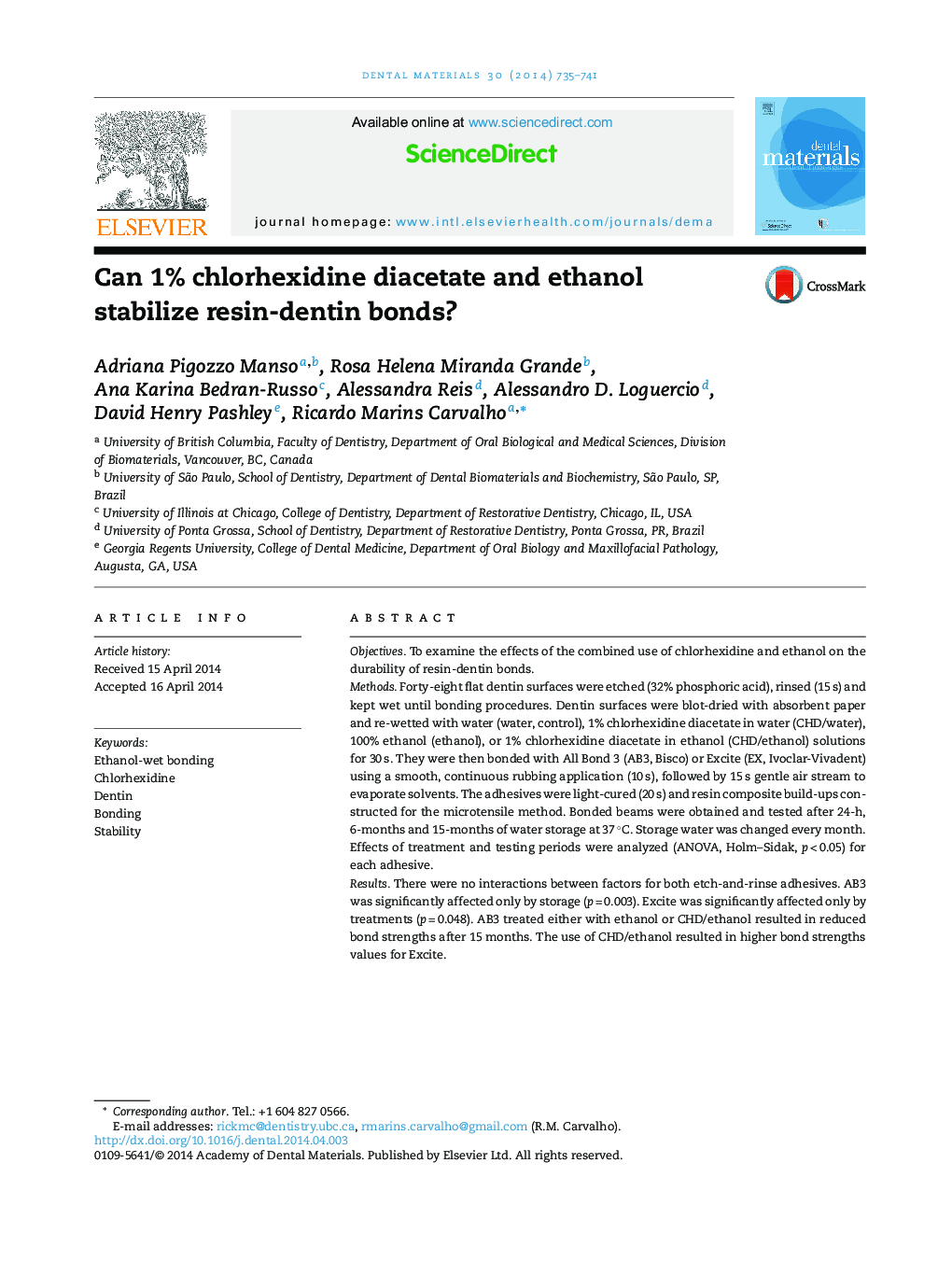| Article ID | Journal | Published Year | Pages | File Type |
|---|---|---|---|---|
| 1420857 | Dental Materials | 2014 | 7 Pages |
ObjectivesTo examine the effects of the combined use of chlorhexidine and ethanol on the durability of resin-dentin bonds.MethodsForty-eight flat dentin surfaces were etched (32% phosphoric acid), rinsed (15 s) and kept wet until bonding procedures. Dentin surfaces were blot-dried with absorbent paper and re-wetted with water (water, control), 1% chlorhexidine diacetate in water (CHD/water), 100% ethanol (ethanol), or 1% chlorhexidine diacetate in ethanol (CHD/ethanol) solutions for 30 s. They were then bonded with All Bond 3 (AB3, Bisco) or Excite (EX, Ivoclar-Vivadent) using a smooth, continuous rubbing application (10 s), followed by 15 s gentle air stream to evaporate solvents. The adhesives were light-cured (20 s) and resin composite build-ups constructed for the microtensile method. Bonded beams were obtained and tested after 24-h, 6-months and 15-months of water storage at 37 °C. Storage water was changed every month. Effects of treatment and testing periods were analyzed (ANOVA, Holm–Sidak, p < 0.05) for each adhesive.ResultsThere were no interactions between factors for both etch-and-rinse adhesives. AB3 was significantly affected only by storage (p = 0.003). Excite was significantly affected only by treatments (p = 0.048). AB3 treated either with ethanol or CHD/ethanol resulted in reduced bond strengths after 15 months. The use of CHD/ethanol resulted in higher bond strengths values for Excite.ConclusionsCombined use of ethanol/1% chlorhexidine diacetate did not stabilize bond strengths after 15 months.
